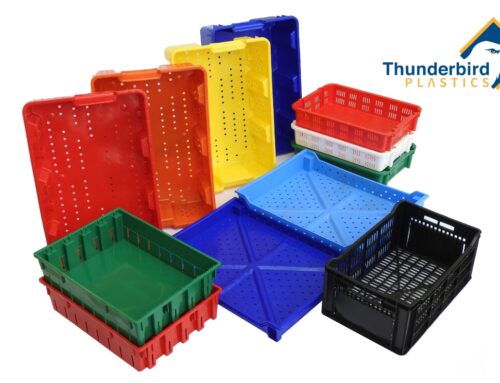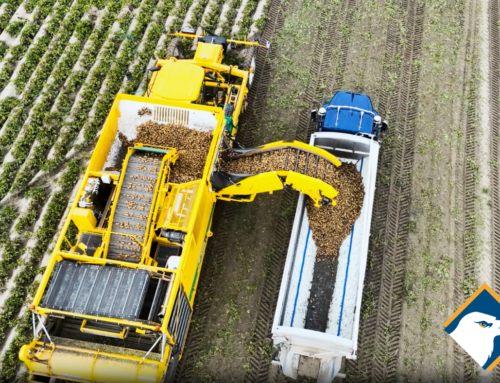Globalization, Food Waste, and Individual Responsibilities
Globalization in the information age has allowed societies to recognize humanity as an interconnected global village where every action we take has a ripple effect on others. This shifting paradigm, combined with pressing economic, social, and environmental factors, has driven humanity to make behavioral changes on the individual level. One such change is auditing stages of the food supply chain in light of the shocking statistics regarding food waste.
Sustainable Agriculture Lowers Food Waste
 Reducing food waste is crucial for several reasons, including environmental sustainability, global food security, and achieving the UN Sustainable Development Goals. Additionally, there are economic benefits for both producers and consumers. Currently, about 40% of the food produced globally is wasted [1]. The U.S. wastes about 30-40% of their food supply, and Canada wastes about 58% [2, 3]. Interestingly enough, developed countries waste more food than developing countries. When food waste does occur in developing countries, it occurs at different stages than in developed countries. In developed countries, most of the food waste occurs at the consumer level, while in developing countries, it occurs at the production, harvest, and transportation stages [4].
Reducing food waste is crucial for several reasons, including environmental sustainability, global food security, and achieving the UN Sustainable Development Goals. Additionally, there are economic benefits for both producers and consumers. Currently, about 40% of the food produced globally is wasted [1]. The U.S. wastes about 30-40% of their food supply, and Canada wastes about 58% [2, 3]. Interestingly enough, developed countries waste more food than developing countries. When food waste does occur in developing countries, it occurs at different stages than in developed countries. In developed countries, most of the food waste occurs at the consumer level, while in developing countries, it occurs at the production, harvest, and transportation stages [4].
To begin to make a difference, it is first important to understand the types of food waste, at which level in the supply chain it occurs, and how much of it is avoidable. Many farmers in the developed world have made every effort to reduce waste in their process, and there is no clear consensus that much more can be done. However, evidence clearly shows that about half of all avoidable food waste happens after reaching the end consumer. In Canada, 47% of total food waste occurs at the household level or when it has reached the end consumer [5]. This indicates that each of us individually has a responsibility to make changes to mitigate this shocking statistic.
The Ugly Produce Movement and Food Waste Solutions
 As awareness of food waste continues to grow, corporations and governments also have a crucial role in reducing food waste by using their marketing and influence to raise awareness and change consumer perception. In the last decade, one of the most noteworthy movements around food waste has been the ugly produce movement, the success of which requires the collaboration of key players along the entire food supply chain. This movement involves a mental reframing away from traditional and arbitrary aesthetic standards for fruits and vegetables and rescuing the misshapen and blemished fruits that often comprise avoidable food waste. When producers, retailers, and consumers include imperfect produce in their food harvest, distribution, and consumption, it minimizes financial losses and leads to a more efficient and equitable food supply system. However, for producers to invest their resources into bringing ugly produce to market, they justifiably need to be confident that there is profit to be made. While various producers may discard ugly produce or use it for fertilizers or animal feed, changing consumer attitudes toward imperfect produce may result in higher profits if brought to the consumer market.
As awareness of food waste continues to grow, corporations and governments also have a crucial role in reducing food waste by using their marketing and influence to raise awareness and change consumer perception. In the last decade, one of the most noteworthy movements around food waste has been the ugly produce movement, the success of which requires the collaboration of key players along the entire food supply chain. This movement involves a mental reframing away from traditional and arbitrary aesthetic standards for fruits and vegetables and rescuing the misshapen and blemished fruits that often comprise avoidable food waste. When producers, retailers, and consumers include imperfect produce in their food harvest, distribution, and consumption, it minimizes financial losses and leads to a more efficient and equitable food supply system. However, for producers to invest their resources into bringing ugly produce to market, they justifiably need to be confident that there is profit to be made. While various producers may discard ugly produce or use it for fertilizers or animal feed, changing consumer attitudes toward imperfect produce may result in higher profits if brought to the consumer market.
 Studies into consumer behavior regarding perceptions towards ugly produce identify nine key themes influencing consumer attitudes: food safety, price sensitivity, location of sale, product display, name/label, the purpose of use, fun, targeted education, and food waste [6]. Research suggests there is a need for marketing campaigns to highlight how ugly produce has the same nutritional value and taste quality as standard produce. Further research on consumer willingness to pay for ugly produce finds that messages about the good quality of ugly produce coupled with messages about environmental sustainability and food waste reduction significantly boost buying behavior [7]. This willingness to pay for ugly produce is an attitude that is introduced through marketing and then further enforced by social learning and modeling within communities. The message then spreads organically as people feel themselves as pivotal members of their global village.
Studies into consumer behavior regarding perceptions towards ugly produce identify nine key themes influencing consumer attitudes: food safety, price sensitivity, location of sale, product display, name/label, the purpose of use, fun, targeted education, and food waste [6]. Research suggests there is a need for marketing campaigns to highlight how ugly produce has the same nutritional value and taste quality as standard produce. Further research on consumer willingness to pay for ugly produce finds that messages about the good quality of ugly produce coupled with messages about environmental sustainability and food waste reduction significantly boost buying behavior [7]. This willingness to pay for ugly produce is an attitude that is introduced through marketing and then further enforced by social learning and modeling within communities. The message then spreads organically as people feel themselves as pivotal members of their global village.
Close to Half of All Avoidable Food Waste Occurs at the Household and Consumer Level: An Opportunity for Change
Inefficiencies and disruptions along the food supply chain, driven by post-COVID recovery and labor strikes, highlight the need for producers and consumers to control what they can. As inflation continues to increase the cost of living, households worldwide are increasingly further from achieving a balance of food affordability with nutrition. A concerning trend toward calorically dense but nutritionally poor meals leaves many vulnerable to illness and malnutrition. Alongside the cost of living, shrinkflation—a practice employed by corporations where product size is reduced while the price is maintained—further strains consumers’ budgets and health. Despite this, the many factors that cannot be controlled do not diminish the positive change within our reach. As previously mentioned, approximately 50% of food waste in the US and Canada occurs at the household and consumer level, which suggests that there is a tangible opportunity to buffer economic pressures and contribute to long-term environmental benefits, community strength, and social resilience.
While the ugly produce movement does seem to suggest that it is consumer attitudes that cause producers to devalue imperfect produce and waste it, this is not accurate. In the developed world, producers are incredibly efficient with repurposing on the production and harvest ends. What this movement does is begin a conversation about avoidable food waste. The paradigm shift at the consumer level is incredibly crucial to a necessary behavioral change. The end consumer who becomes willing to pay for imperfect produce is primed to begin a pattern of more mindful behavior. They may audit their behavior around purchasing, meal planning, and willingness to consume food that is already in their home that has not spoiled but is past a best-before or sell-by date. The ugly produce movement is only one portion of a larger conversation around climate change, nutrition inequality, and industrial efficiencies in an increasingly globalized world where each individual has the responsibility to make the most caring decision for their community.
Thunderbird Plastics Supports Sustainable Agriculture Efforts and Responsible Harvesting Practices
 At Thunderbird Plastics, we strive to help sustainability-minded producers achieve their conservation goals by offering 100% recyclable harvesting containers and bins. Our agricultural containers help reduce food waste because they are mindfully designed with optional partitions and smooth surfaces to protect harvested fruits and vegetables from damage. As part of our recycling program, we promise to take back any of our products when they are no longer useful, helping to keep plastics out of our landfills.
At Thunderbird Plastics, we strive to help sustainability-minded producers achieve their conservation goals by offering 100% recyclable harvesting containers and bins. Our agricultural containers help reduce food waste because they are mindfully designed with optional partitions and smooth surfaces to protect harvested fruits and vegetables from damage. As part of our recycling program, we promise to take back any of our products when they are no longer useful, helping to keep plastics out of our landfills.
Call sales at 888-77T-BIRD or email us at info@thunderbirdplastics.com!
References:
[1] Food and Agriculture Organization of the United Nations (FAO). (2024). Food loss and waste: Valorizing waste while maintaining food safety. Rome: FAO. Adapted from FAO. (2024). Food safety in a circular economy. Food Safety and Quality Series, No. 29. https://doi.org/10.4060/cd1789en
[2] U.S. Department of Agriculture (USDA). (2019). The environmental and economic costs of food waste in the United States. USDA. Retrieved from https://www.usda.gov/foodwaste
[3] Second Harvest. (2020). The 2020 Food Waste Report: The cost of food waste in Canada. Second Harvest. Retrieved from https://www.secondharvest.ca
[4] Das, R. C. (Ed.). (2024). Sustainable agricultural practices: Economic and environmental implications. Emerald Publishing Limited.
[5] Blair, N. (2024, October 16). Food waste Canada statistics. Made in CA. Retrieved November 18, 2024, from https://madeinca.ca/food-waste-canada-statistics/
[6] Yuan, J. J., Yi, S., Williams, H. A., & Park, O.-H. (2019). US consumers’ perceptions of imperfect “ugly” produce. British Food Journal, 121(11), 2666–2682. https://doi.org/10.1108/BFJ-03-2019-0206
[7] Qi, D., Penn, J., Li, R., & Roe, B. E. (2022). Winning ugly: Profit maximizing marketing strategies for ugly foods. Journal of Retailing and Consumer Services, 64, 102834. https://doi.org/10.1016/j.jretconser.2021.102834






